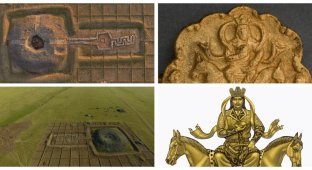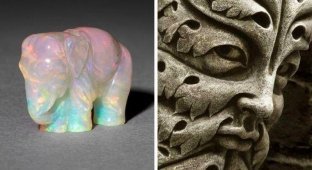25 mysterious and difficult to explain archaeological finds (26 photos)
Archeology helps us understand what happened on Earth many centuries ago. But sometimes the finds of archaeologists are so mysterious that it is impossible to give them an unambiguous explanation. We can only guess. 
25. Loki Belt Buckle 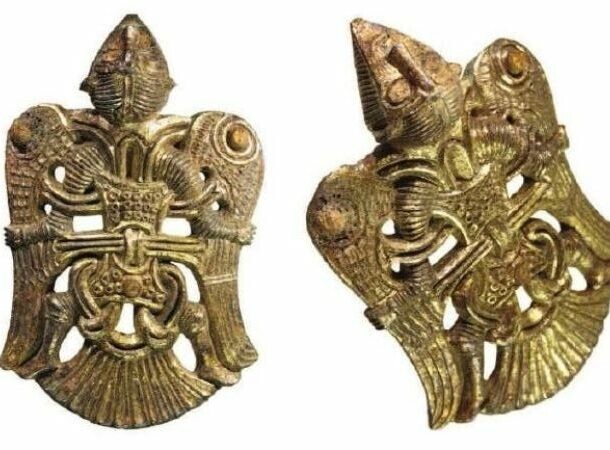
Loki is not just a character from Marvel comics, but one of the main characters in Scandinavian mythology, the god of cunning, deceit and deceit. A belt buckle with an image of Loki was found at excavations at the Viking settlement of Ågård in Denmark. This is the first artifact of this kind found in Denmark; before that, similar things were found only in Sweden and Norway. The mischievous and restless Loki is a legend, so it is impossible to say whether he really existed.
24. Sakkar bird 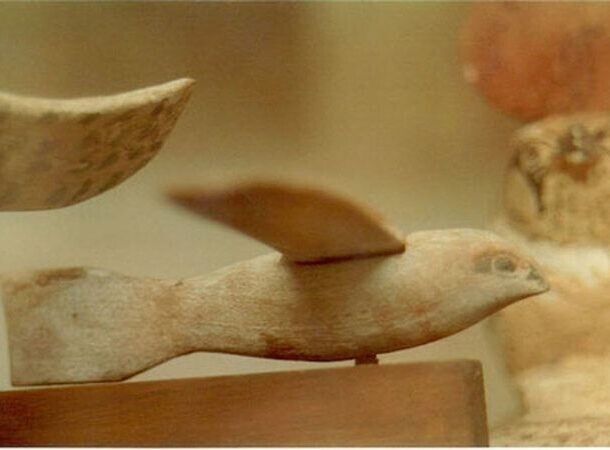
A wooden figurine of a bird, found in the late 1800s in Saqqara, is an artifact from Ancient Egypt. Experts have not yet decided what the exact purpose of this item is. Due to its glider-like design, some believe the figurine represents some kind of ancient Egyptian aircraft. Prototypes were even built, but the results were mixed. Others are sure that the Bird of Saqqara is just a children's toy.
23. Ancient “airplanes” 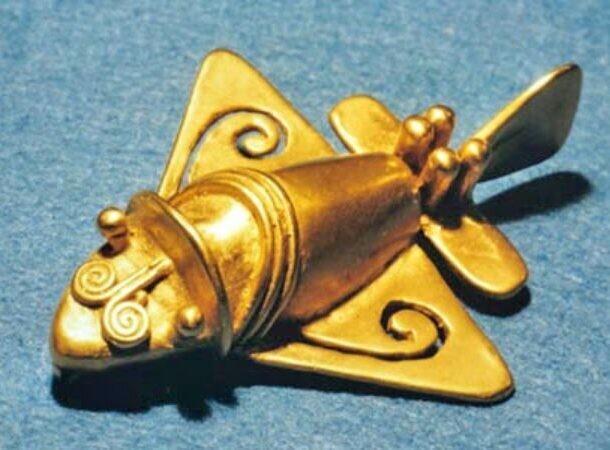
Adding to the aviation theme, here's another finely crafted gold piece, this time from Colombia. What is it, an animal figurine or a model of a complex aircraft created in 500 AD? e.? Whatever one may say, these “trinkets” at one time made the archaeological community scratch their heads.
22. Baghdad battery 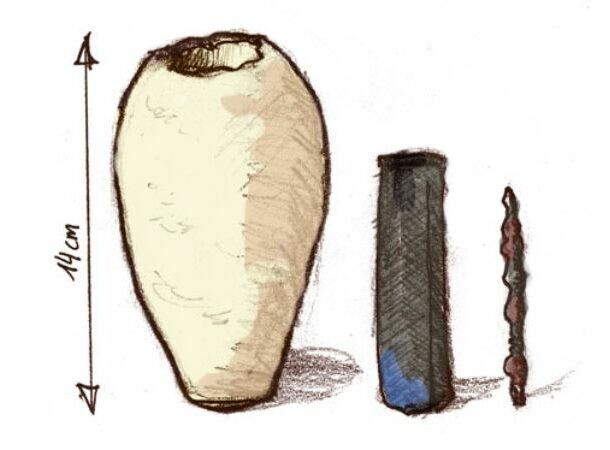
Batteries are a relatively modern invention. Could they have existed thousands of years ago? The Baghdad “battery” was found in the late 1930s in Iraq by German archaeologist Wilhelm König. From the outside it looks like a clay pot, but if you look inside, you can see a rolled sheet of copper containing an iron rod. Using this design, electricity can be generated, although at very low power. To do this, pour an acidic liquid into the vessel, for example a weak solution of vinegar. The acid reacts with copper and iron. Wilhelm Koenig suggested that a Baghdad battery (more precisely, a “galvanic” cell), filled with acid or alkali, could create an electrical voltage of one volt. Koenig reviewed the exhibits of the National Museum of Iraq. He was surprised by silver-plated copper vases dating back to 2500 BC. e. As Koenig suggested, the silver on the vases was deposited using the electrolytic method.
21. Patomsky crater 
This limestone wonder looks like it was created by human hands. But it seems that nature created it. At least that's the theory. No one can say with certainty how the Patom crater appeared (there are even hypotheses related to UFOs). The dimensions of the crater are 160 meters in diameter and 40 meters in height. It is named after the Patom River and is located in the Bodaibinsky district of the Irkutsk region. Due to the fact that the crater stands out from the surrounding landscape and has a frightening, otherworldly appearance, it has also received the name "Eagle's Nest". The age of the crater is about 500 years or more. Discovered in 1949 by Soviet geologist Vadim Kolpakov.
20. Nazca geoglyphs 
The Nazca geoglyphs are a group of giant geometric and figurative images on the Nazca plateau in Peru - these are 143 drawings and 13 thousand lines and figures on a huge “canvas”. They were created starting from 500 BC. e. and ending with 500 AD. e. The lines are white because that is the color of the ground when you pick up the pebbles that cover it. Geoglyphs depict various animals and plants, and there are also many stripes, triangles, trapezoids and spirals. A clear explanation of why they are there has not yet been found.
19. Mysterious Hill 
In the USA there is a place called “Mysterious Hill”, which is located in New Hampshire. The hill consists of stone cave-like structures with walls and ceilings. What is this - a megalithic platform forstargazing built by Native Americans about 4,000 years ago? Or is this a more modern building? Some believe it should be dated to the 19th century. Sinister fact: this place is located in Salem, the famous city of witches and those who persecuted them.
18. Face in the Rock 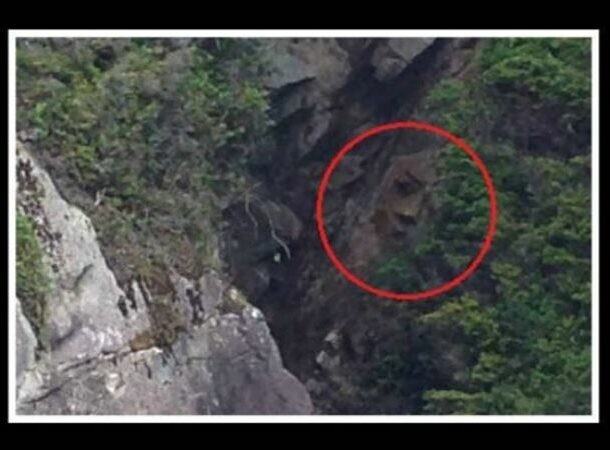
This face - or what looks like it - was discovered by chance in 2008 on Ricks Island in Canada's Pacific National Park while someone was kayaking past. It is difficult to say whether it was created by people or natural forces. There is a hypothesis that the Tseshaht First Nation, which has long lived in this area, could have had a hand in this creation.
17. Gobekli Tepe 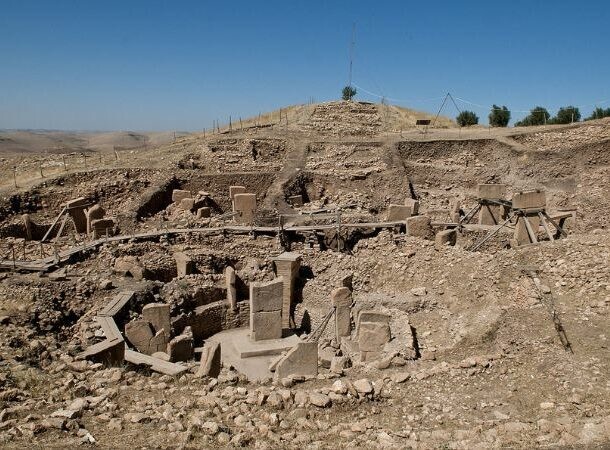
Another mysterious landmark made of stone is Göbekli Tepe in southeastern Turkey. Its name translates as “Bellied Hill”. It was discovered in the 1990s by German archaeologist Klaus Schmidt. Age - approximately 11,000 years. The pillars are T-shaped and the material used is limestone. Stone tools were also found. Apparently, the structures were built by hunter-gatherers who lived in the pre-Neolithic era, and their real purpose was lost in the mists of time. It is safe to assume that the construction of Göbekli Tepe was associated with religious activities. Klaus Schmidt believed that rituals were held there, and recently evidence has been discovered that people lived on the site. This is one of the oldest examples of its kind on the planet.
16. Ica Stones 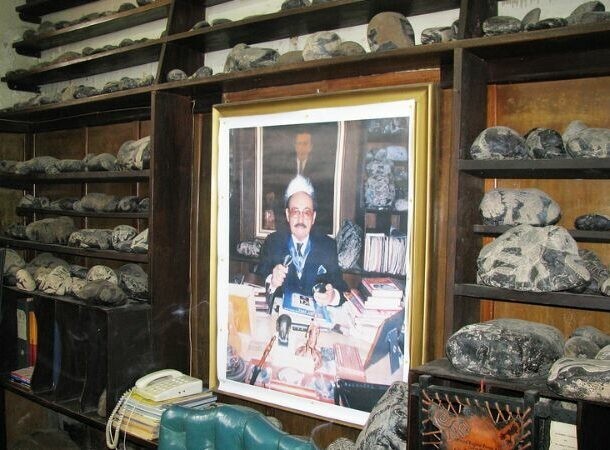
The Ica stones came into the public domain thanks to Dr. Javier Cabrera. In the 1930s, a farmer from Peru came to the doctor. He held out a stone with a fish on it. And not an ordinary fish, but a fossil. So who created this image? According to Dr. Cabrera, it could be aliens. Or humanity was older than previously thought. Javier Cabrera was a professor of medicine and did not have an archaeological education, but he left behind a Scientific Museum consisting of more than 50 thousand Ica stones. They are engraved with ancient Andean inhabitants in scenes that contradict modern chronology. Many believe that this is a common hoax. But there are also supporters of the ancient origin of these artifacts. Small collections of Ica stones are also displayed in some other museums in Peru.
15. Guatemalan stone head 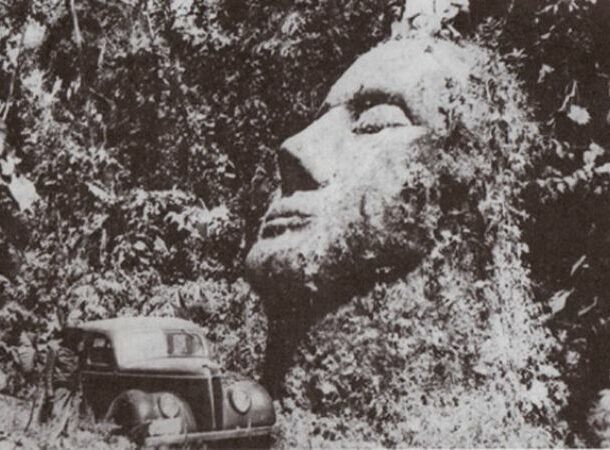
You've probably heard of the large Easter Island stone heads, but what about the stone head from Guatemala in Central America? This face is located in the jungle in the south of the country. His features are not similar to those of the locals. We don't know much about this head other than it was discovered over 100 years ago. Doctor Oscar Rafael Padilla Lara told the world about its existence. There is no evidence that this is really an item from antiquity and not a remake.
14. Skara Brae 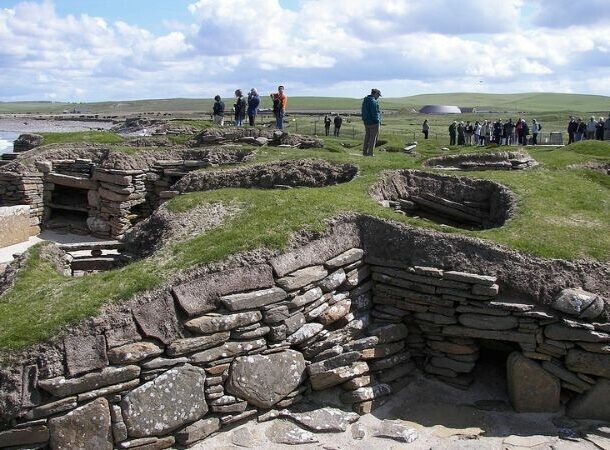
Now we head to colder climes, to the Skara Brae region. This Neolithic village, which has things like beds and even a toilet, is located in the Orkney Islands in Scotland. The village consists of 8 houses, combined into blocks, which were inhabited approximately 3100-2500. BC e. Scientists believe the Stone Age village was abandoned under mysterious circumstances around 2500 BC. Nature played a large role in the discovery of Skara Brae. In the mid-19th century, a hurricane demolished the dune. Below it was a village.
13. Angkor 
Another incredible discovery in the jungle was the ancient city of Angkor in Cambodia. It is believed that this pre-industrial center was home to about a million people. It used water as an energy source. It is well preserved, but this does not make it any less mysterious. We cannot understand why this place has turned from a powerful urban center into a desert swallowed up by nature.
12. "Desert Kites" 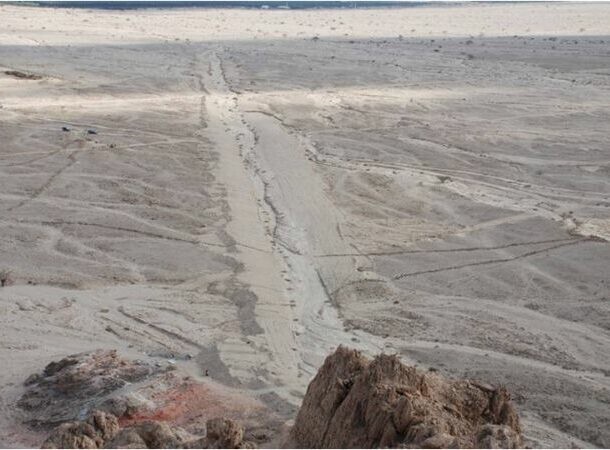
These are not ancient kites, but they are connected to the air - they were noticed from above by people flying over the Middle Eastern desert. Pilots observed a spectacle resembling the image of a kite, hence the name.Down there, someone has built low stone walls that form a corridor leading to the expanding part (the "head" of the serpent). We have known about these walls since the beginning of the 20th century. These structures stretch for kilometers. By the 21st century, a theory had been developed that the walls served as traps for animals. Game (such as gazelles) would encounter barriers and be guided to a location where they could be caught or killed.
11. Temples of Ggantia 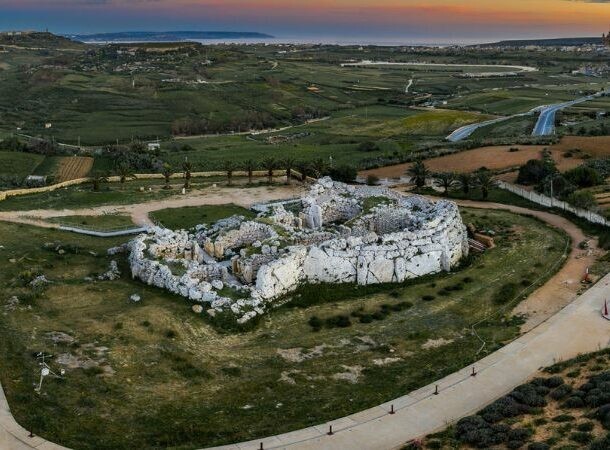
On one of the Maltese islands, which is called Gozo, there is a collection of limestone megaliths over 5,000 years old. The height of the largest is about six meters. How were ancient peoples able to create such an impressive structure? Disputes about who actually built the temples of Ggantia are still ongoing. There is an urgent need for a time machine to jump into it and find out what happened there.
10. Artifacts of Sanxingdui 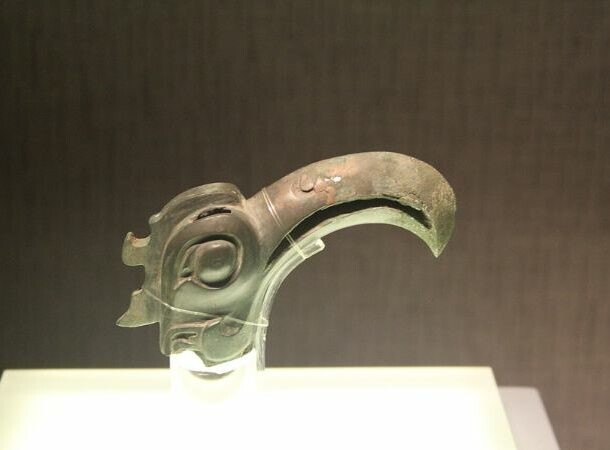
Modern people first heard about them in 1929, and a more detailed story appeared half a century later. Representatives of the Sanxingdui culture lived in China approximately 3,000 years ago. They left behind amazing artifacts made from jade, stone, bronze and other materials. For some reason, the Sanxingdui left their home, but, interestingly, they buried many of their wonderful products in pits. This unusual bird head is just one example of their work.
9. Sungir burial 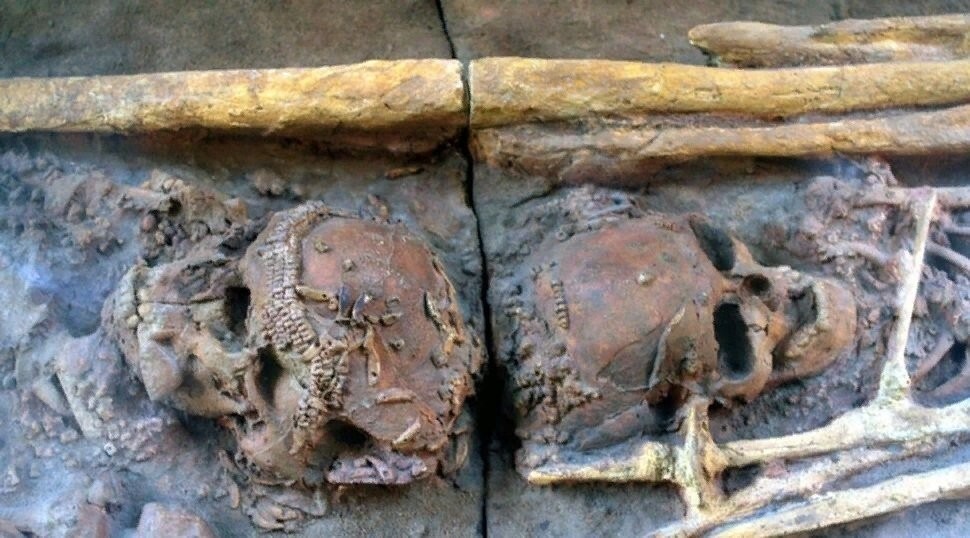
This very intriguing Upper Paleolithic burial is believed to date back astonishingly 34,000 years ago. A 40-50 year old man and two teenage boys from the hunter-gatherer community at the Sungir site in Russia are buried here. Apparently they were killed. The burial is very rich; on the clothes of the buried there are about 80 thousand different decorations made of pebbles and mammoth ivory. Given the nature of the burial, these Sungir people were undoubtedly important members of the community. Sungir is one of the richest and most studied sites of ancient man: during excavations that were carried out here for almost 30 years, about 70 thousand archaeological finds were made.
8. "Unknown Person E" 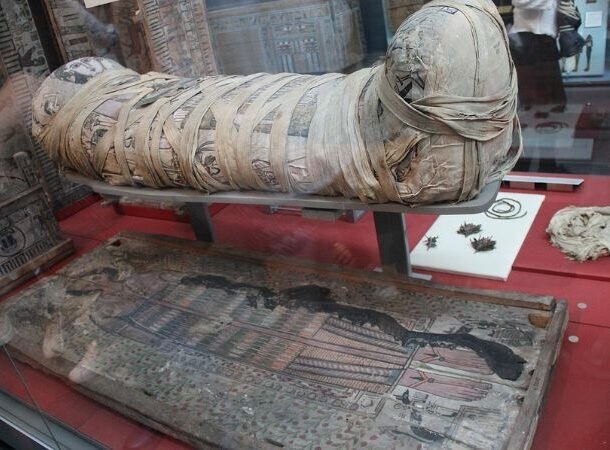
Is there anything more frightening and strange than a dried-up ancient mummy? And a dried mummy with a face frozen in a scream? This nightmarish artifact was found by French archaeologists in 1886 in the vicinity of Luxor at the Deir el-Bahri memorial complex. Scientists immediately did not figure out who the mummy belonged to, and called it “Unknown Man E.” He was clearly in great pain as he died. A hundred years later, DNA analysis revealed that the “Screaming Mummy” was the son of Pharaoh Ramesses III, Pentaur, who was involved in a conspiracy against his father and his rightful heir, Ramesses IV. The conspirators killed Pharaoh, but they failed to solve Ramesses IV. They were caught, tried and executed. Specifically, Pentaur, according to surviving records, was hanged.
7. Cannibal Neanderthals 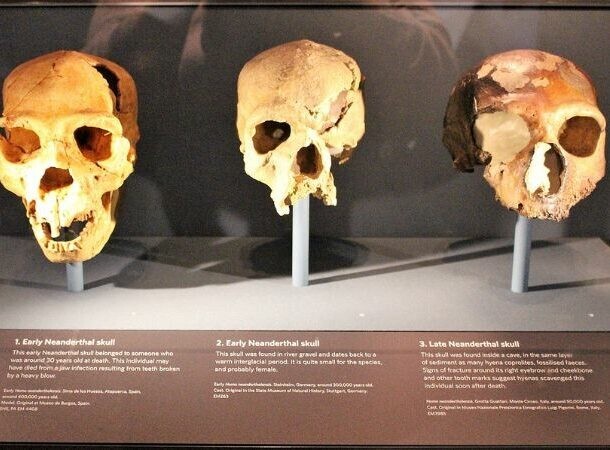
The image of the ancient Neanderthal with his rough features and caveman habits is well known. Did you know that some of these people ate each other? It seems that this is not entirely true: in some places there is evidence of cannibalism, but in others not. One example was found in a Belgian cave, where human bones apparently belonging to a murder victim provided new insight into Neanderthal man's reputation as a primitive man. The inhabitants of the cave were not only cannibals, but also reportedly used bone marrow and also made tools from skeletal remains.
6 Sandby Borg Massacre 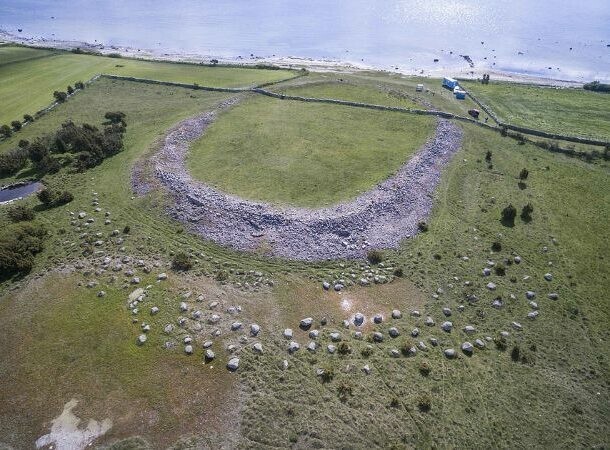
The surprise attack killed the inhabitants of the fifth-century Swedish community and was not discovered until centuries later. Sundby Borg is an Iron Age round fort, that is, an ancient fortress located in a circle. People were brutally killed, although no one knows exactly why the massacre occurred. All unburied remained lying in the same place where they died - in houses and on the streets. This is an interesting example of an archaeological find, which on the one hand is very specific, and on the other hand represents an interesting mystery. The area is familiar to us, and we have an idea about the people. But we don't know why their lives ended so cruelly.
5. Stone balls of Costa Rica 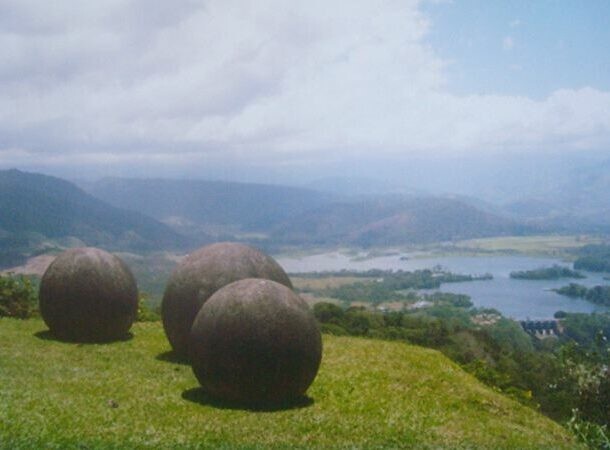
These spherical wonders of ideal shape and different sizes are found in the jungles of Central America. Officials in ancient Costa Rica, or what became Costa Rica, lined up these balls as they approached their homes. Some of the balls reached two meters in diameter. The bigger the balls, the higher the power? Who knows. They consist of gabbro, limestone and sandstone. Their sizes vary from an inch across to two meters; the largest weigh 16 tons.
4. "Hobbits" 
We already talked about Loki at the very beginning, now it’s the turn of another mythical character - the hobbit. But we are not talking about creatures from Middle-earth, but about an ancient collection of skeletons belonging to a small group of human ancestors called Homo floresiensis. Surprisingly, we didn't know about these little guys until 2003, when they were discovered on Flores, an island in Indonesia. This find expanded the understanding of human development, although it did not provide a complete explanation of the phenomenon. Apparently, "hobbits" lived on the island about 100,000 years ago. And yes, like Tolkien's hobbits, they had short legs and large feet.
3. Crystal Skulls 
Crystal skulls aren't just a plot device in an Indiana Jones movie. At the heart of Indy's adventures is a very real example of entertaining archaeology. Made from quartz, these skulls are associated with ancient Mesoamerica. These powerful civilizations, which included the Aztecs and were destroyed by the Spanish in the 16th century, occupied Mexico and Central America. They carved crystal skulls, no doubt for a purpose. The skulls are impressive and even a little scary. However, we have practically no idea what was in the minds of those who created them.
2. Wooden hand in a well 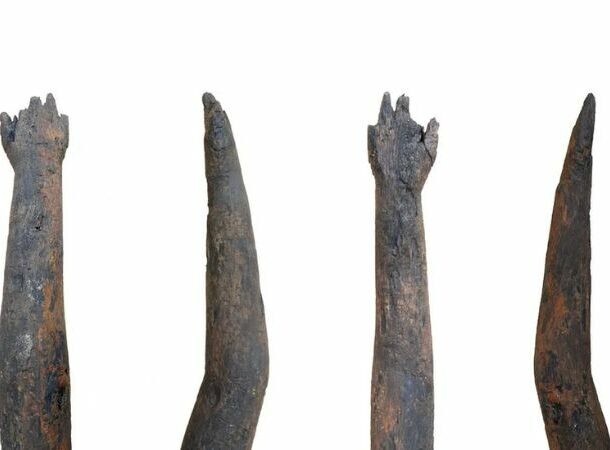
What was the wooden hand doing at the bottom of an ancient Roman well in Northamptonshire (England)? Found in an industrial area, the 2,000-year-old artifact was made from a tree branch and was extremely well preserved. Is a hand believed to have once been part of a wooden body, long lost, evidence of an offering to the Roman gods? The strange discovery was made only in 2019, and scientists will probably have to puzzle over it for a long time.
1. Natural nuclear reactor 
To build a nuclear reactor, you don't necessarily need a team of construction workers. Anything can happen thanks to Mother Nature. How do we know this? Thanks to archeology and the ancient world. Discovered in a mine in West Africa, this reactor was created without any human intervention. In fact, it predates our species. The reactor at the Oklo mine is believed to be about two billion years old. How did he work? It began to generate thermal energy through a combination of clay and uranium minerals that happened to be mixed together. Flood waters then dissolved the minerals and carried them underground into the water supply. The algae absorbed the uranium. Because there was so much uranium-rich algae, it created a critical mass and then a chain reaction. The neutrons and atoms did their job and the rest is history.












